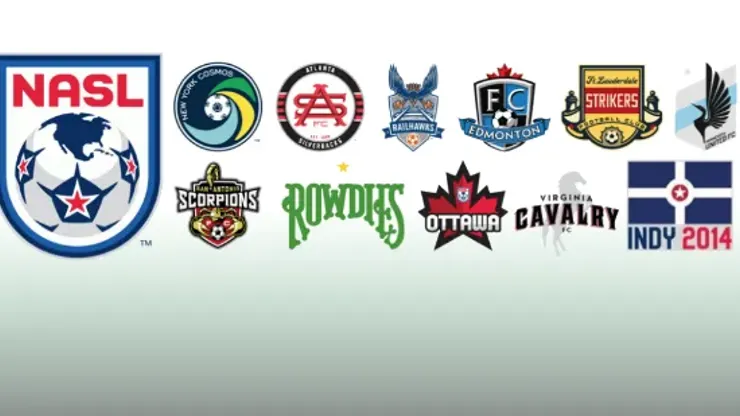The new MLS Collective Bargaining Agreement (CBA) appears to be a big victory for MLS players and for the league’s management. With four new expansion clubs having paid large fees to join the league and a new TV deal along with several new lucrative sponsorships, Major League Soccer is poised to emerge as one of the global powerhouses in the sport.
The ultimate loser in the MLS CBA agreement is likely to be the ambitious North American Soccer League (NASL), which has tried to make a case at various times in recent years that it can be a concurrent first division thanks to its free market model that includes outright free agency.
Major League Soccer now emerges into its 20th year as a clear American success story. Player wages will increase, freedom of movement will now be allowed in certain circumstances and television exposure will be higher than ever across the globe. From scratch in an industry fraught with risk, owners have in twenty years built an institution that will last for decades to come. MLS isn’t perfect but it took a big step forward Wednesday night.
The NASL has countered that they have a free market approach as opposed to a system that resembles socialism that characterizes MLS’ single entity structure. However, single entity has worked and now MLS is emerging a powerful and strong force in the global football market. NASL on the other hand will face enormous challenges thanks to this CBA.
The newly agreed upon CBA takes the minimum MLS player salaries away from the levels where NASL teams can poach guys from MLS clubs. This almost completely undercuts NASL’s ability to compete for mid and lower level MLS players. The new CBA also ensures that players in MLS can move within the league after a certain period of time. NASL clubs have benefited directly from signing veteran MLS players with mid-level salaries, whose rights were held by a club they did not want to play for. Tampa Bay Rowdies Goalkeeper Matt Pickens and New York Cosmos defender Hunter Freeman are examples of this. While Tampa Bay, New York and also Minnesota can continue to compete with MLS clubs for players, this CBA probably prices the rest of NASL out of competing for legitimate first division players.
NASL has had a hard time convincing many prospective owners of joining the league thanks to rival-league USL’s affiliate agreement with MLS. While I believe NASL has the stronger case to be a sole Division 2 league in the U.S, the writing is on the wall that the USSF is likely to allow USL and its MLS reserve teams to attain the same status as NASL’s highest-level professional teams that draw upwards of 10,000 a game. USL will probably continue to attract new owners and investment thanks to MLS’ interest, leaving NASL virtually alone on an island.
The weakness of some NASL owners and clubs is also a drawback. MLS’ single-entity structure does not allow for organizations to be so non-competitive financially that they drag the entire league down. While critics will point to Chivas USA, that was an exceptional circumstance. NASL’s freewheeling, market based approach has allowed some high-level professional organizations like the Tampa Bay Rowdies and New York Cosmos, who operate on a level close to MLS in terms of staff competence and structure, to share the same league as teams like the Atlanta Silverbacks and Fort Lauderdale Strikers, who are in real terms, not even completely professional clubs.
With NASL’s growing disparity, it highlights the potential for teams to fail in the very near future dragging the entire league down. This is countered by MLS, where a rising tide lifts all boats and where the new agreement between players and management probably ends the NASL’s dream of truly competing with MLS. When you factor in the USL situation and the ability of MLS and USL to collude in order to essentially control the pro soccer pyramid in the United States, it becomes obvious the NASL is getting close to a point of being completely boxed in – that is unless NASL finally accepts its role as a league that attempts to bring an advanced and innovative competition to fans who are not in MLS markets. NASL Commissioner Bill Peterson is a smart and savvy survivor of the sports business. I would hope he will look at the MLS and its CBA and realize, a time to pivot has come and that the league in order to survive will need to find a niche which accepts MLS’ overall supremacy in the U.S Soccer Pyramid.
200+ Channels With Sports & News
- Starting price: $33/mo. for fubo Latino Package
- Watch Premier League, Women’s World Cup, Euro 2024 & Gold Cup
The New Home of MLS
- Price: $14.99/mo. for MLS Season Pass
- Watch every MLS game including playoffs & Leagues Cup
Many Sports & ESPN Originals
- Price: $10.99/mo. (or get ESPN+, Hulu & Disney+ for $14.99/mo.)
- Features Bundesliga, LaLiga, Championship, & FA Cup
2,000+ soccer games per year
- Price: $5.99/mo
- Features Champions League, Serie A, Europa League & Brasileirāo
175 Premier League Games & PL TV
- Starting price: $5.99/mo. for Peacock Premium
- Watch 175 exclusive EPL games per season






